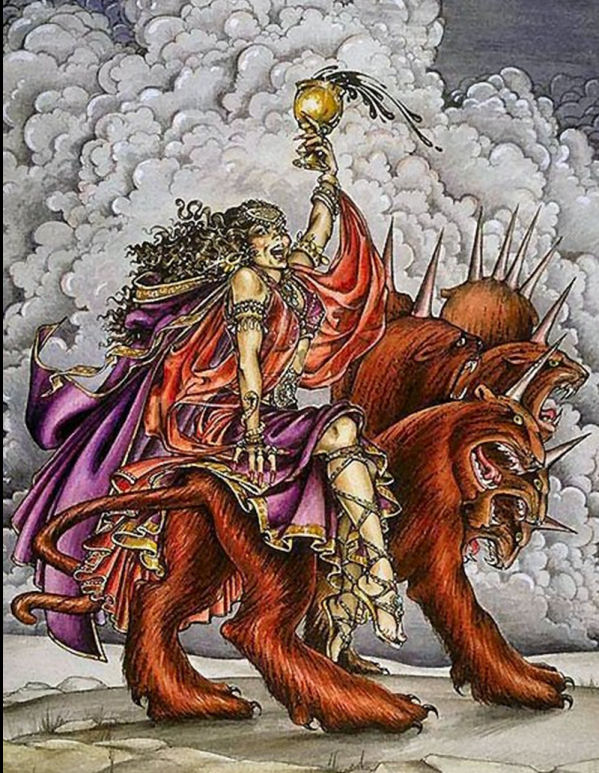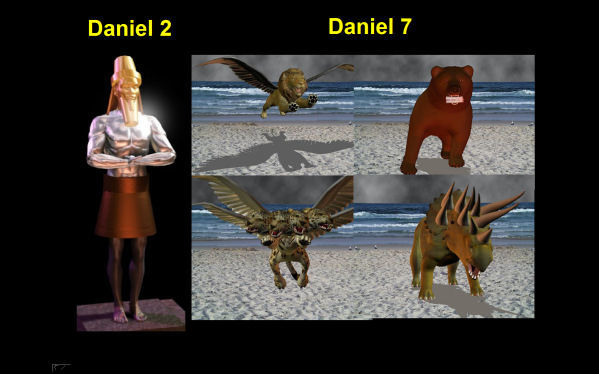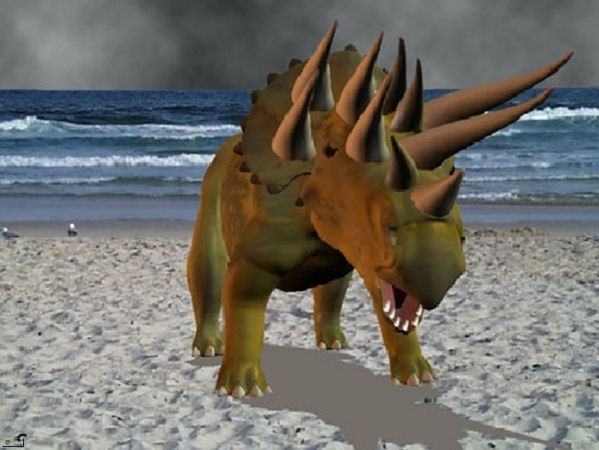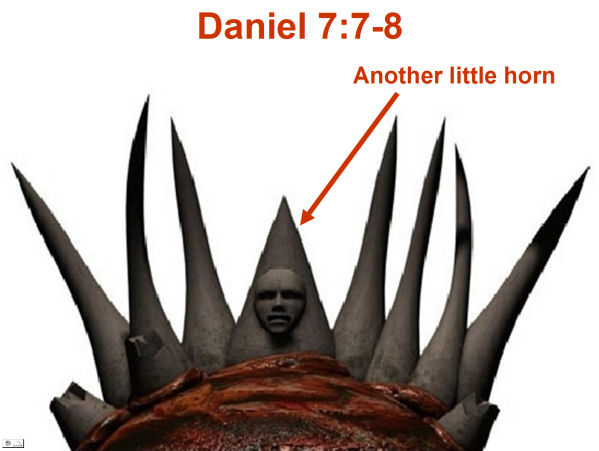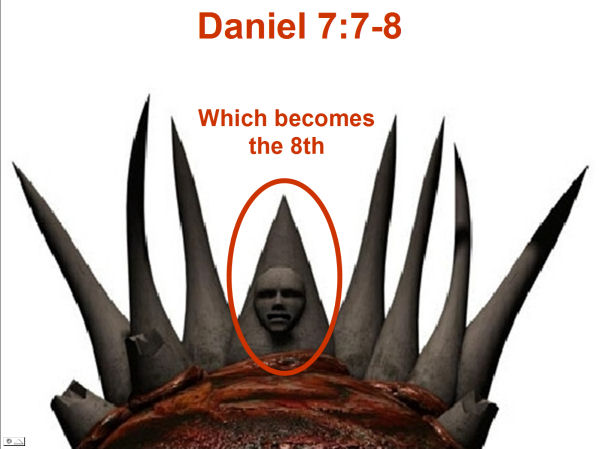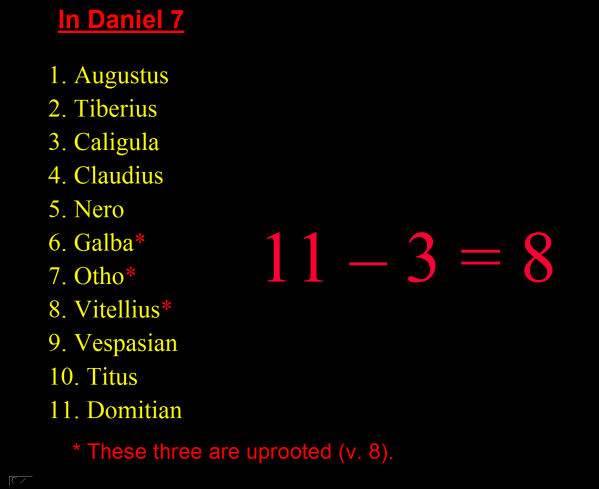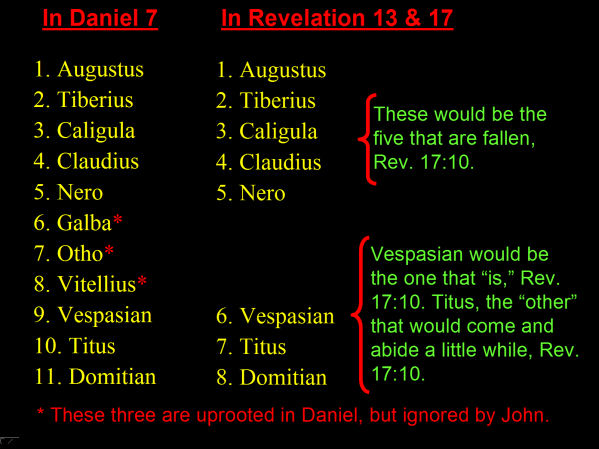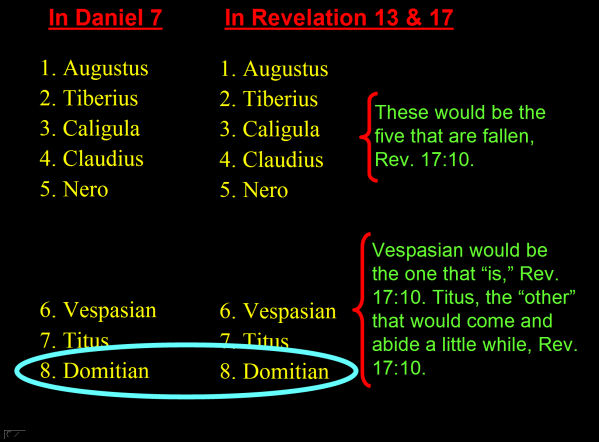
(Part VII) Because REs have concluded there are no future prophecies yet to be fulfilled (they believe these were all fulfilled in connection with the destruction of Jerusalem in A.D. 70), they claim all New Testament writings were written prior to A.D. 70. As Almon Williams pointed out in a 1986 Florida College lecture critiquing RE, “The belief in pre-AD 70 dates for the NT books is absolutely necessary for the truthfulness of this doctrine [he’s speaking of RE] whereas the only view about the dates of the NT books essential to the traditional view is that all of the books must have been written sometime within the lifetime of the authors.” 1 He went on to say:
Williams went on to demonstrate just how “artificial, silly, overbearing, and false” this RE claim really is. My intent is not to get into all of these. Therefore, I recommend Williams’ lecture to anyone who is interested in those details. Instead, I have chosen to give my reasons why I believe the book of Revelation was written post-A.D. 70. I do this realizing that there are those who will read this who are not REs, but believe the book of Revelation was actually written prior to A.D. 70. This, in fact, is bro. Williams’ belief. Therefore, it should be obvious that a pre-A.D. 70 view does not automatically force one into the RE camp. On the other hand, if John’s Apocalypse was written post-A.D. 70, then RE is clearly false for, as Clinton Hamilton made clear in an article critiquing RE, “If there is a book of the NT written after A.D. 70 that mentions a future event to be fulfilled, then the adherents of the A.D. 70 theory under consideration would be dealt a death blow.” 3 The Internal Evidence In The Book Of Revelation Points To A post-A.D. 70 Vision I have chosen the book of Revelation because I believe there is in this book, when properly interpreted, clear internal evidence that supports a post-A.D. 70 date. Even so, I am not a traditional “late dater,” as that term has come to be used. In fact, I reject the traditional A.D. 95-98 time frame for the book, and I do so for internal dating reasons found in Revelation 13 and 17, which I believe are the same as those set forth in Daniel 2 and 7. The “Sea” And “Earth” Beasts Of Revelation 13 In Revelation 13, we are introduced to two bestial images of Imperial Rome. The first is Rome as a military power (the sea beast). Instead of honoring God, who is really the supreme Sovereign and Giver of every good and perfect gift, Rome submits to and extends the authority of “the dragon, that old serpent, the Devil” (Rev. 12:9; 20:2). The second beast (the earth beast) is the image of Rome as a perverted religious power that works to bind all the nations to Rome in a way that goes beyond what mere military might/force can accomplish. The religious structures of Rome are but another way of expressing her power—a power which is, at its core, Satanic, receiving its power from none other than the dragon mentioned in chapter 12. Below is a depiction of the dragon, the sea beast, and the earth beast, who deceives the people into worshiping the sea beast.
Yet a third image of Rome is introduced in chapters 17 and 18, where it is depicted as both a woman and a city. There, it is Rome as the world’s leading commercial power supported by the military might of the sea beast depicted here in chapter 13. Over the years, chapter 13 has been the locus of much contention. Part of the reason for this is clear: It is a difficult chapter! But in spite of its difficulties, it is explainable. So, when it comes to this chapter, one must keep his Bible and his mind opened. In this regard, one should notice that chapters 4 thru 12 and 14 thru 19 have huge chunks of praise to God. Make a special note how these sections sandwich chapter 13, where the world worships the sea beast (Rome), as this serves as yet another overarching theme that runs through this book over and over again: We must worship God and Him alone! In light of the frightening images that reflect the beasts of chapter 13, along with the world that worships them (or it), chapters 14 and 15 speak comfort and courage once again. In a series of announcements, much like modern-day newspaper headlines, it is proclaimed to the people of God that Rome and all her allies are to be destroyed. These chapters preview what will happen in later chapters, like the battle of Armageddon, the destruction of the great city, et cetera. In chapter 16, just as the seventh seal contained the seven trumpets, so the seventh trumpet contains the seven bowls of wrath. Taken in their entirety, the seven bowls complete the outpouring of God’s wrath on the Satanic kingdom and all that support it. The description of the battle of Armageddon (remember 1:1 & 3 and 22:6 & 10) is pictured as being between two sides: Those who come from the sunrise and cross water on dry ground against the dragon, the beast (i.e., the sea beast), and the false prophet (i.e., the earth beast) and their armies. This is just another way of describing the battle between the church of Christ and Rome. No one in the Scriptures crosses water on dry ground but the people of God. The pouring out of the seven bowls reminds us of the plagues against Egypt when it was the power that oppressed God’s people and opposed God’s purpose in the world. Aspects of what the seven bowls cover are developed in chapters 18 thru 20. The bowls of wrath have been poured out. Judgment is completed. Rome has been destroyed. But the details have not yet been given. In chapters 17 and 18, we have the obituary of Babylon. She was described as “fallen” (not “falling”) in chapter 14. In 16:19, we saw her totally defeated, but without any real detail. In these two chapters, she is described in all her vileness and cruelty. Here her arrogance is graphically displayed before us, as well as her well-deserved doom. Here she is described as a great harlot/whore/prostitute with whom all the kings and merchants of the world commit fornication. She is a city on seven hills that rules the world in John’s day. She is supported in this by her military might, all of which derived power from the dragon. Therefore, this isn’t Jerusalem, as some have supposed. Her commercial nature is demonstrated in the almost tedious description of her as the world’s warehouse.
Again, this can’t be Jerusalem. But like so many other nations, she is destroyed by inner division and goes down in flames (chapter 18). All this is God’s will. So, this is Rome’s destruction as viewed by one set of images, and as we’ve been able to ascertain, there are many images of Rome in this book. With this said, it is time to turn our attention to an examination of the relationship between Daniel 2 and 7 and Revelation 13 and 17. When trying to understand Revelation 13 and 17, it is important to be acquainted with Daniel 2 and 7, as it seems clear that Daniel is writing of some of the same things John is. Therefore, we will first show the relationship between Daniel 2 and 7. Then, we’ll look at how this relates to Revelation 13 and 17. Daniel 2 And 7 In the chart below, we have a depiction of what is described in Daniel 2 and Daniel 7. Although the images depicted are different, they are talking about the same thing: four world powers—the Babylonian, Medo-Persian, Macedonian, and Roman empires. In Daniel 2, these four empires are described as four different metals: the Head of Gold empire, the Chest and Arms of Silver empire, the Belly and Thighs of Bronze empire, and the Legs and Feet of Iron and Clay empire. When we get to Daniel 7, we are talking about the same world empires being described in Daniel 2. But instead of one giant image representing four different metal empires, we now have these same empires described as four different beasts: a winged lion, bear (larger on one side than the other), winged leopard (with four heads), and a “dreadful and terrible” unknown beast with ten horns on its head.
The first three of these empires/kingdoms are clearly identified in the book of Daniel:
Consequently, the fourth kingdom, which is not identified by Daniel, has to be:
Why? Because, historically speaking, the Babylonian empire was followed by the Medo-Persian empire, which was followed by the Grecian empire, which was followed by the Roman empire. Concerning the task at hand (viz., identifying the internal evidence from the book of Revelation which tells us whether it was written pre-A.D. 70 or post-A.D. 70), it is the fourth beast of Daniel 7, depicted in the chart below, on which we want to focus our attention.
This fourth beast, which is Rome, is described as having ten horns on its head. These ten horns are ten kings (v. 24). I realize “kings” could, and sometimes does, mean “kingdoms,” but Daniel 8:21 makes it clear that such also speaks of individual rulers. Thus, my reading of Daniel 7:24 brings me to ten “rulers.” These ten are, 1) Augustus; 2) Tiberius; 3) Caligula; 4) Cladius; 5) Nero; 6) Galba; 7) Ortho; 8) Vitellius; 9) Vespasian; 10) Titus. According to Daniel 7:7-8, three of these are rooted up, as depicted below.
After the three are rooted up, “another horn, a little one,” appears, with “a mouth speaking pompous things” (v. 8b), which makes this king the eleventh, or the eighth, depending whether you add them all together or whether you subtract the three rooted-up ones (see the two depictions immediately below).
On the chart that follows, 11 emperors are listed in the order they served. With three rooted up, the eleven become eight. The number “8” becomes very important in dating John’s Apocalypse, so remember it.
This eleventh, or eighth, “horn” is further described for us, in no small detail, in Daniel 7.
This, I am convinced, is Domitian, for there can be no doubt that Domitian was a Roman and, therefore, of the fourth beast. There can be no doubt that he was the eleventh emperor, for Julius Caesar, despite what early daters and REs think, was not the first emperor of Rome—Augustus was! We'll see the significance of this when we get to Revelation 13 and 17, where we’ll see just how it relates to the dating of John’s Apocalypse—a dating which completely overthrows the whole RE system. But before doing this, let’s learn a bit more about Domitian, as this will allow us to see how he fits perfectly the “little horn” of Daniel’s prophecy. The Braggart Who Claimed Deity From his youth up, Domitian was known as a braggart. Of this, Seutonius said:
Domitian sought to be, and was, referred to as Dominus et Deus which means “Lord and God.” Concerning this arrogance, Seutonius, in the same place cited above, said:
In his commentary on the book of Revelation, William Barclay wrote of Domitian this way:
There is no doubt that Domitian persecuted the saints, although his personal involvement has more than likely been too zealously overstated by some. Nevertheless, he certainly did persecute Christians. In doing so, he began an empire-wide policy which wasn’t officially ended until Constantine’s Edict of Toleration in 311. As was previously pointed out, Domitian was also number “8.” This is extremely important, for if Domitian is to be identified with “the beast” of Revelation 17:8, and I believe he is, then the date of John’s Apocalypse becomes very clear. This date, which we’ll pin down shortly, was, and this is most significant, after the destruction of Jerusalem in A.D. 70. It is time, then, for us to examine Revelation 13 and 17. Revelation 13 And 17 Before concentrating on chapter 13, please notice what is said in Revelation 17:8a, for it is important to the dating of the book. John, writing of Rome, said, “The beast that you saw was, and is not, and will ascend out of the bottomless pit and go to perdition.” He went on to say (in 8b), “And those who dwell on the earth will marvel, whose names are not written in the Book of Life from the foundation of the world, when they see the beast that was, and is not, and yet is.” The last phrase in this verse is rendered “and yet is” in the KJV and NKJV. This is clearly not a good translation of this phrase, as it is preceded by “and is not.” In other words, the beast that John saw, at the time of this vision, “is not.” But something can’t be “is not” and “yet is” at the same time. Thus, the AV translates the “and yet is” as “and shall come.” The ESV translates it as “and is to come.” The ISV says, “and will come again.” Finally, the RV translates it as “and shall come.” It can be seen that these translations comport with the future sense of “and will ascend” (future tense) of verse 8a. The thing I want you to see is that the beast “was” (i.e., had been), “is not” (as John is receiving this revelation), but “shall come” (future tense). Thus, if we can discover what “was,” “is not,” but “shall come,” then we can know something about the date when John is receiving this revelation. Having said this, I want to direct your attention back to Revelation 13. In Revelation 13, we see a seven-headed, ten-horned beast rising up out of the sea. Notice the similarities here with the seven-headed, ten-horned dragon of 12:3. This, I think, is because the beast here in 13 is the manifestation of the dragon at the time of John’s vision. In other words, the power behind this whole unfolding scene is the dragon. Nevertheless, the manifestation of his hatred toward the saints takes the form of the persecuting civil authority of Rome. As we meet this beast here, it is described as having only seven heads. But as we’ll see later, he actually has eight heads. But who, or what, are these seven heads? In 17:9-10, we are told the heads have a twofold significance: They stand for seven hills and seven kings. Most everyone acknowledges the seven hills represent the seven hills on which Rome sat. But who are the seven kings? They are, I believe, 1) Augustus, 2) Tiberius, 3) Caligula, 4) Cladius, 5) Nero, 6) Vespasian, and 7) Titus. Five of these have already fallen (17:10). These would be 1) Augustus, 2) Tiberius, 3) Caligula, 4) Cladius, and 5) Nero. The one who now “is” (17:10) at the time of John’ vision, is 6) Vespasian. The one who is “not yet come,” is 7) Titus. Then, when 7) Titus finally comes to the throne, he would reign only for “a little while.” He actually reigned for just two years. This whole picture is essentially taken from Daniel. Please keep in mind that in apocalyptic speech, “heads” or “horns” may be used to stand for kings. This is what we see in Revelation 17:9-12. In Daniel 2:38; 7:6; 8:8 and other places, we have this very same thing. With this firmly entrenched in our minds, it is time to see this thing charted out.
When the three who were uprooted are removed from Daniel’s list, it matches perfectly John’s list, as indicated in the following chart. Note that the main player is the eighth head of Revelation and the eighth horn of Daniel, who is, I believe, Domitian.
Why does not John mention the eleven that Daniel does? Well, it seems that no matter how one looks at it, the three that are rooted up in Daniel and the three that are not mentioned in Revelation (we’re talking Galba, Ortho, and Vitellius here) are simply not important to the coming of the eleventh emperor, except by their being unrooted, for it is through such that the eleventh, who is Domitian, becomes the eighth. Domitian being the eighth, in turn, is quite significant to understanding what’s being depicted, for the number “8” represents resurrection, and resurrection plays a significant part of the role Domitian will play as Rome arrays itself against the Lord’s people. 6 With Nero, we had the beginning of the blood-letting of the Christians. In chapter 5 of Tutullians’s Apology, he writes: “Consult your annals, and there you will find Nero, the first emperor who dyed his sword in Christian blood, when our religion was but arising at Rome.” So, when the beast “was,” Nero was persecuting Christians. But after Nero died, and before Domitian arose to take the throne in Rome, the “beast,” who I understand to be Rome as a persecutor of Christians (with Satan being the power behind the throne), “is not.” Historically, neither Vespasian (69-79) nor Titus (79-81) persecuted Christians. Such persecution, and I’m speaking of empire-wide persecution, did not occur again until the reign of Domitian. It was Eusebius (c. 263-339), the Roman historian, in his Ecclesiastical History, who said, speaking of Domitian, “He finally showed himself the successor of Nero’s campaign of hostility to God. He was the second to promote persecution against us, though his father, Vespasian, had planned no evil against us. With this agrees Tertullian [c. 160-225], who said: ‘A long time after, Domitian, a limb of the bloody Nero, makes some like attempts against the Christians.’” And, it was the name of Nero that would continue to be associated with Domitian even into the third century. So, when John received this revelation, “the beast” (viz., Rome as a persecuting entity receiving its power from the Devil) is represented as being “is not” (17:8), even though there is an emperor sitting on the throne in Rome (viz., Vespasian [69-79]). This is because Nero is dead, and with him so was the empire-wide persecution of Christians. But with the coming to the throne of the contemptible Domitian, the persecution begun by Nero would start all over again. Nevertheless, at the time John received and communicated this vision, the “beast” was “is not” (i.e., he was not being manifested). With this in mind, remember what is said in Revelation 13:3: “I saw one of his heads as if it had been mortally wounded [think Nero], and his deadly wound was healed [think Domitian]. And all the world marveled and followed the beast.” Thus, Nero, who is said to have committed suicide in 68, is the head that was mortally wounded. At the time John is receiving this revelation, then, Nero is already dead (see the chart above). After his death, there was no empire-wide persecution of Christians (thus, the “beast” is described as “is not”) until the rise of Domitian (the one who “will ascend out of the bottomless pit”), who reigned from 81-96. This latter persecution under Domitian, as has already been mentioned, would not officially end until Constantine’s Edict of Toleration in 311. In this light, the statement in 17:8, which says the “beast” that John had seen (back in 13:1-10) “is not,” means there was no empire-wide persecution during the time of John’s vision. You say, Sure there was; I say, No, there wasn’t. You say, But John himself is exiled on the isle of Patmos for his faith. Yes, this is so, but it did not have to be as a result of empire-wide persecution. He could have very well gotten out of sorts with one of the local authorities and been exiled as a result—i.e., it did not have to be the “beast” that put him there (i.e., it did not have to be as the result of an empire-wide persecution under the direction of the Emperor). Consequently, if my interpretation of the “horns” of Daniel and the “heads” of Revelation is correct, it is Vespasian, not Nero (as the early daters and REs think), who was sitting on the throne at the time of this vision. This coordinates very nicely with the “was, is not, will ascend” scenario of Revelation 17:8. On the other hand, if Nero is ruling, as early daters and RE contend, how could it be said that the beast “is not”? So, with Vespasian, who did not persecute Christians, on the throne, the window of opportunity for the dating of this book narrows to 69-79. We will, Lord willing, continue this thought in the next article. 1 “A.D. 70: The End?” in The Doctrine Of Last Things, Melvin L. Curry, ed., p. 213. 2 Ibid. 3 “The End of All Things and the A.D. 70 Theory” in A Study of the A.D. 70 Doctrine, Mike Willis, ed., p. 27. 4 Seutonius, Lives of the Twelve Caesars, pp. 354-355. 5 William Barclay, Revelation, vol. 2, pp. 23-24 of the Daily Bible Study Series. 6 The number “8” is significant. Its meaning here has two aspects: One is that “8” is greater than “7,” the perfect number (i.e., the number of God). It conveys Domitian’s arrogance in exalting himself above God. The other aspect, and the one that ties Domitian in with Nero, is “resurrection.” The people of his day believed he was the resurrected Nero, and in the sense of this prophecy, he was. Nero, who was the first emperor to engage in persecuting the saints was dead, thus the “beast” is described as “was” and “not yet” while John was receiving and writing this revelation. But he “is coming,” and this is Domitian, who picks up Nero’s mantle and begins to persecute Christians once again. |

